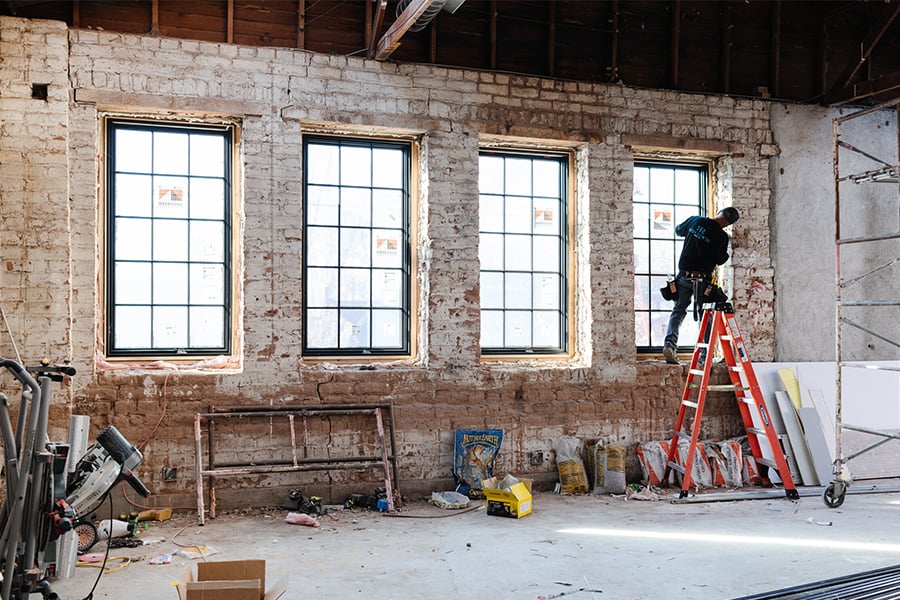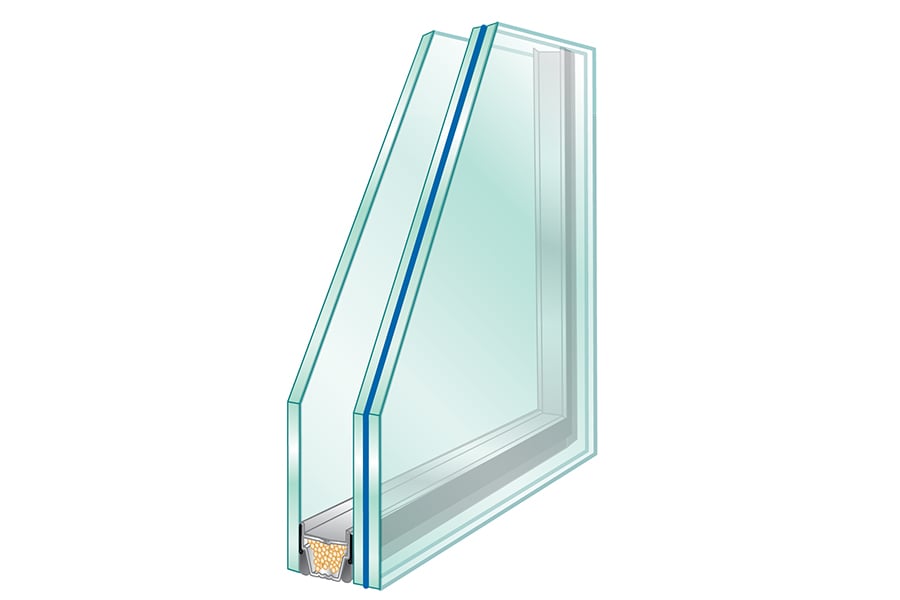How to soundproof windows
Looking to spec or order windows that will help reduce sound? We’ll explain what you need to know to pick out windows for a quieter home.

While there’s no such thing as a soundproof window, there are windows that effectively reduce sound. Material and insulation both play a role in reducing sound, but the glass construction has the greatest influence on a window’s ability to dampen noise. The number of panes in a glass construction, their thickness, and the distance between them all make a difference. Generally, the thicker the glass, the better it blocks sound.
Windows that reduce noise
The best option for reducing sound will depend on your budget and priorities. Here are the options you should be aware of:
1. Single-pane versus dual-pane versus triple-pane glass
Windows with single-pane glass are less common than they were 20 years ago, but they are still found in some older homes. In these cases, replacing windows with new ones that have dual-pane glass will make a noticeable difference in reducing sound (as well as improving energy efficiency).
Keep in mind that going from dual-pane glass to triple-pane glass will not necessarily yield the same dramatic results. So, if your primary objective is to reduce sound, you’ll likely be better off with a dual-pane window that has thicker panes (like laminated glass) or a window that pairs panes of different thicknesses (an STC upgrade) — skip to the next section for these details.

When this historic commercial building was converted into a home, A-Series Casement Windows with dual-pane glass and full-divided light grilles were chosen. These windows, which are 8-feet tall, help muffle sound from the heavily trafficked street outside while matching the building’s character.
2. STC-upgraded glass
We offer a type of window glass option that’s specially designed to reduce sound. It’s called an STC upgrade. STC stands for Sound Transmission Class and is a common sound measurement — find more details in “How to compare soundproofing” below. A window with an STC upgrade combines glass panes with mismatched thicknesses. Making one pane thicker makes it harder for sound to travel through the glass (When the panes of glass are the same thickness within a construction, they vibrate at the same frequency making it easier for the sound to pass).
The STC upgrade is available with 100 Series windows and E-Series windows.
3. Laminated glass
Laminated glass is commonly used in coastal windows and where safety glass is needed, but these are not its only applications. It also can be used to reduce sound. Its composition of glass-interlayer-glass makes it a more effective solution than non-laminated window glass because the rigidity reduces the vibration of the glass and as a result, sound’s ability to travel through the glass.
Note: When this option is chosen, typically only one pane of glass is made of laminated glass. Laminated glass is an option across a wide variety of product types.

The illustration above shows a cross-section example of a dual-pane window with laminated glass. The laminated glass helps reduce sound more effectively than non-laminated dual-pane glass.
How to compare sound performance
There are two common measures of sound performance that you’ll come across: STC and OITC.
- STC (Sound Transmission Class) measures indoor sounds, like people talking, TV, and music.
- OITC (Outdoor-Indoor Transmission Class) measures outdoor-to-indoor sounds, like traffic, airplane noise, and construction.
For both measures, the higher the number the better.
A typical dual-pane window has an STC rating of 25-30. If sound reduction is a priority, look for a window in the 30-35 STC range. Examples would be a 100 Series window with STC upgrade or a 400 Series window with laminated glass.
Here’s a quick guide to understanding STC grading.
STC 30 = This is where most dual-pane windows perform. You’d be able to hear and understand a loud conversation happening outside.
STC 30-35 = This is an elevated level of sound abatement. You might hear a loud conversation happening outside but wouldn’t be able to follow it.
STC 36-40 = This is a high level of sound abatement. Even loud conversations would hardly be audible.